The ADATA XPG GAMMIX S10 (512GB) SSD Review: Entry-Level NVMe With Style
by Billy Tallis on October 25, 2017 8:30 AM ESTAnandTech Storage Bench - Light
Our Light storage test has relatively more sequential accesses and lower queue depths than The Destroyer or the Heavy test, and it's by far the shortest test overall. It's based largely on applications that aren't highly dependent on storage performance, so this is a test more of application launch times and file load times. This test can be seen as the sum of all the little delays in daily usage, but with the idle times trimmed to 25ms it takes less than half an hour to run. Details of the Light test can be found here. As with the ATSB Heavy test, this test is run with the drive both freshly erased and empty, and after filling the drive with sequential writes.
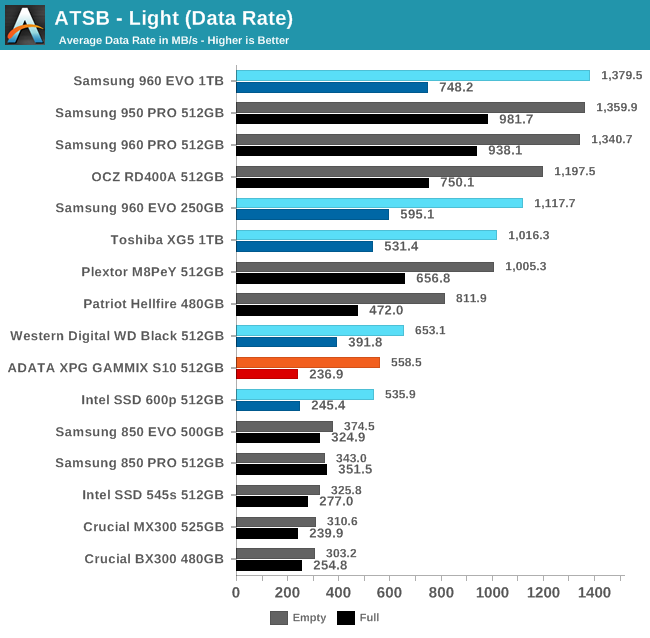
Like the Intel 600p, the ADATA XPG GAMMIX S10 has a substantial performance advantage over all SATA SSDs on the Light test when the test is run on an empty drive. But when the drive is full, the GAMMIX S10 and Intel 600p both suffer more than most drives and fall to an average data rate that is lower than most mainstream SATA drives.
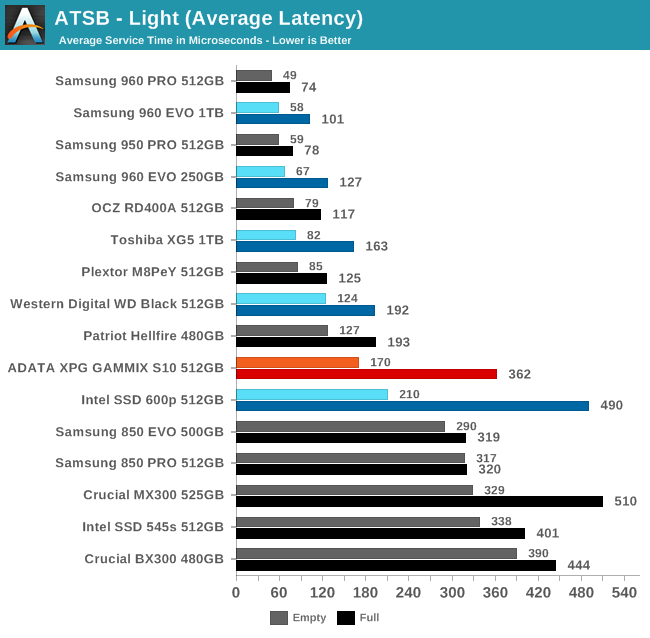

The average and 99th percentile latency scores of the GAMMIX S10 on the Light test are clearly better than the Intel 600p, allowing the GAMMIX S10 to deliver latencies that are no worse than mainstream SATA SSDs even in the worst case of the test running on a full drive. On a freshly erased drive, the GAMMIX S10 offers average latency that is close to other NVMe drives, and the 99th percentile latency is on par with other budget NVMe SSDs.
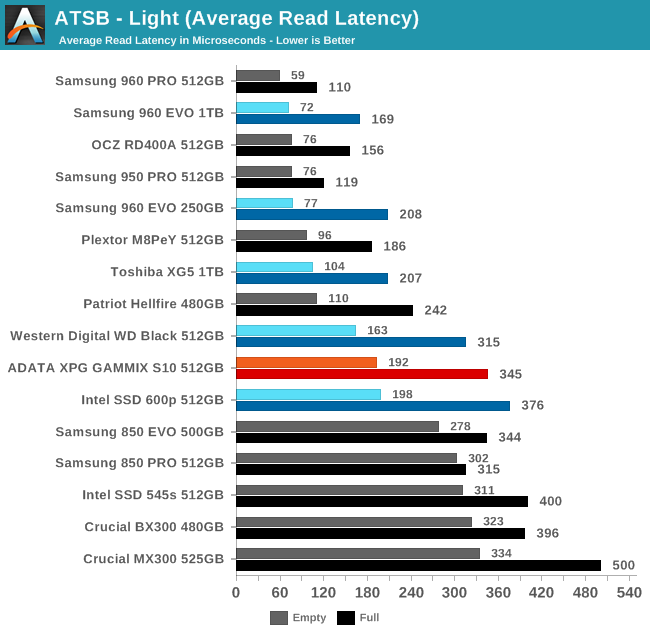
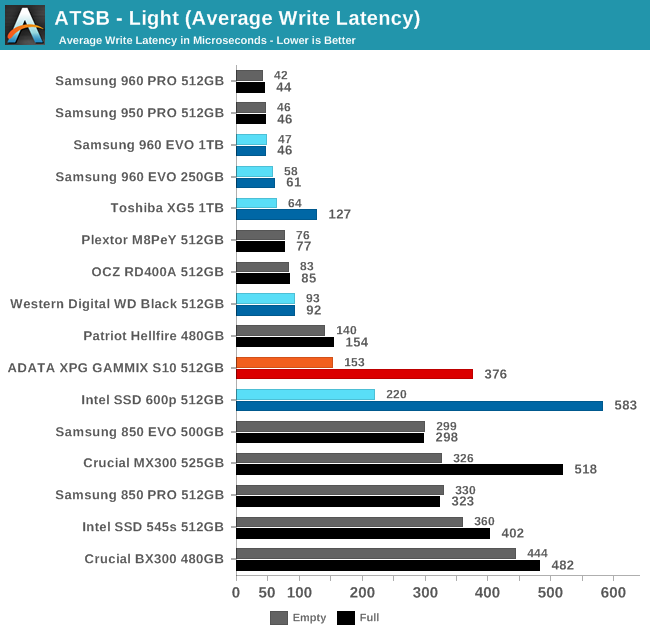
Average read and write latencies for the GAMMIX S10 on the Light test are poor by NVMe standards, but both are better than SATA SSDs when the drive is fresh, and no worse than mainstream SATA when the drive is full.
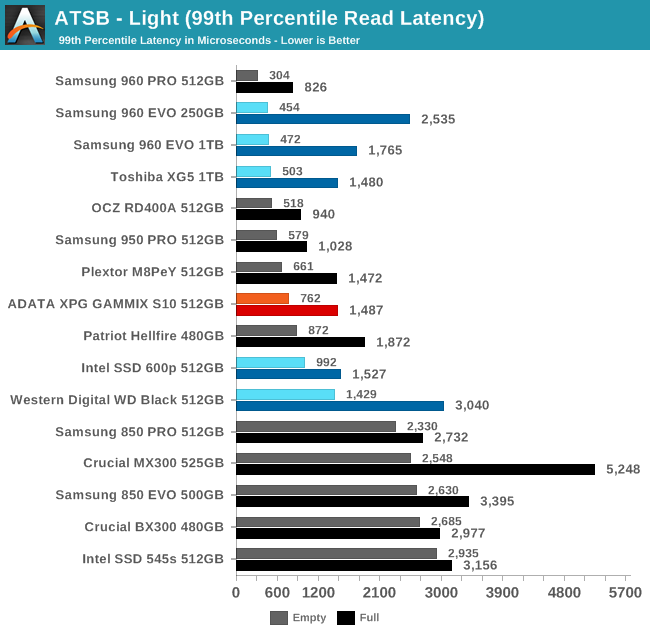
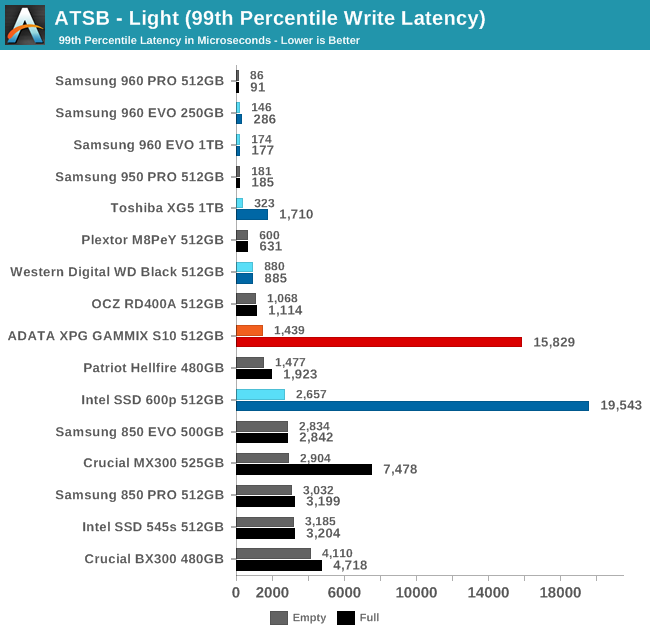
The 99th percentile read latency performance of the GAMMIX S10 is fine for a low-end NVMe drive. On the write side of things the GAMMIX S10 does fine when freshly erased, but the 99th percentile jumps up by a factor of ten when the drive is full. This makes it worse at controlling latency outliers than any mainstream SATA SSD.
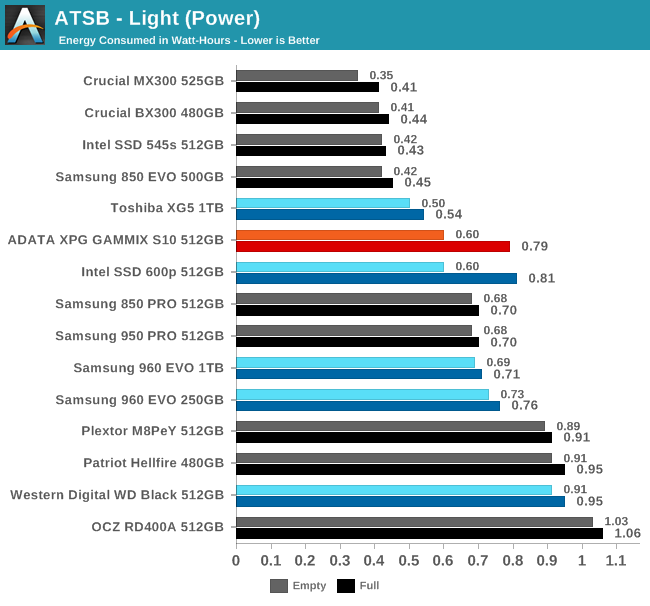
The energy usage of the GAMMIX S10 on the Light test is good compared to most other NVMe SSDs, though the energy usage is much higher when the drive is full. There's still a substantial gap between the energy usage of a typical SATA SSD and that of the GAMMIX S10 or a typical NVMe SSD.










27 Comments
View All Comments
futrtrubl - Wednesday, October 25, 2017 - link
Disappointing.jabber - Wednesday, October 25, 2017 - link
Why? You wouldn't notice if it could do 3500MBps either.futrtrubl - Thursday, October 26, 2017 - link
Because it does less but costs more. What isn't disappointing about that?jabber - Thursday, October 26, 2017 - link
Yeah but it looks much fancier so to the average Joe that's worth another $30! It's a strategy that Apple has used and been praised for for decades. Performance means nothing to the computing masses. It's just those of us on IT forums that care.FullmetalTitan - Thursday, October 26, 2017 - link
No "average Joe" is even looking at NVMe SSDs.This costs double the price of a GOOD SATA SSD, and frequently fails to even meet that performance level.
jabber - Thursday, October 26, 2017 - link
You'd be amazed at what I see 'Average Joe's buy. Shocking at times."Why did you buy...that?"
ddriver - Wednesday, October 25, 2017 - link
That's some pristine engineering idiocy right there, having the heatsink make contact with only a small part of the chip area deliberately.ddriver - Wednesday, October 25, 2017 - link
"GAMMIX" - more like "gimmix" LOLrrinker - Wednesday, October 25, 2017 - link
I saw that skipped right to the conclusion for the (predicted) disappointing results. If they screw up the engineering for the sake of appearance like that, I was sure the rest of it would be disappointing as well.ddriver - Wednesday, October 25, 2017 - link
The thing is that the heatsink is protruding between the adhesive pads, so it presumably makes contact with the chip, however without any thermal interface material it is likely that the heatsink severs to insulate and worsen thermal performance than to improve it.Probably it is a mix of both, yielding somewhere between barely improving to barely "detrimenting" thermal performance, making it mostly a pointless gimmick.
Like everyone else, ADATA is well aware how low average consumer IQ is, thus attempting to make this fly.
On the bright side of things, adding some thermal paste would easily make the cooling solution functional. Although I doubt the product performance will get any less pathetic because of that. They didn't put that heatsink there because it is throttling as a side-effect of being very fast. They put it as a cosmetic feature, that much is evident from the clumsy implementation.